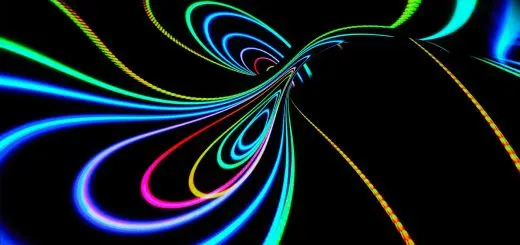Pop Art Revival: Modern Interpretations and Artists

Looking for more amazing products? Check out our online store and explore our collection here! Happy shopping!
Before diving in, please note: This post is for informational purposes only. If you’d like to know more about how we approach topics, feel free to check out our friendly Disclaimer Page.
Hey there, amazing readers! 
We’re committed to delivering quality posts, and your support (even just sticking around despite the ads) means everything to us. So, bear with us, and thanks for helping us keep the good vibes rolling. Now, on to the fun stuff!
TRANSLATE BUTTON AT THE END OF THE ARTICLE
Introduction: Exploring the Pop Art Revival
In recent years, the Pop Art movement has experienced a resurgence in popularity, with contemporary artists drawing inspiration from its vibrant and dynamic aesthetic.
This revival has brought a fresh perspective to the art world, merging the iconic elements of Pop Art with modern interpretations.
From bold colors and graphic patterns to the use of popular culture references, the influence of Pop Art can be seen in various artistic disciplines, including painting, sculpture, fashion, and design.
In this article, we will delve into the origins of Pop Art, examine its key characteristics in modern interpretations, explore its impact on contemporary artists, and discuss its enduring legacy in today’s art scene.
Origins of Pop Art: A Brief History
Pop Art emerged in the 1950s and 1960s as a reaction against the dominant artistic movements of the time.
Artists such as Andy Warhol, Roy Lichtenstein, and Claes Oldenburg sought to challenge the traditional notions of art by incorporating imagery from popular culture, advertising, and mass media into their work.
By elevating everyday objects and icons to the status of art, Pop Art blurred the lines between high and low culture, challenging viewers to reconsider the boundaries of artistic expression.
This groundbreaking approach revolutionized the art world and paved the way for the Pop Art movement to flourish.
Characteristics of Pop Art in Modern Interpretations
In modern interpretations of Pop Art, artists continue to embrace the movement’s key characteristics while infusing their own unique style and perspective.
Bold colors, graphic patterns, and the use of popular culture references remain central to Pop Art-inspired works, creating a visually striking and dynamic aesthetic.
Artists often explore themes of consumerism, celebrity culture, and mass production, reflecting the influence of technology and globalization on contemporary society.
By reinterpreting the iconic elements of Pop Art in new and innovative ways, artists are able to connect with audiences on a deeper level and provoke thought and reflection.
Pop Art Revival: Influence on Contemporary Artists
The Pop Art revival has had a profound influence on contemporary artists, inspiring them to experiment with new techniques, materials, and concepts.
Artists such as Takashi Murakami, Jeff Koons, and Yayoi Kusama have embraced the spirit of Pop Art in their work, creating visually stunning pieces that resonate with audiences around the world.
By incorporating elements of consumer culture, mass media, and popular icons into their art, these artists continue to push the boundaries of artistic expression and challenge traditional conventions.
The Pop Art revival has provided a platform for artists to explore new ideas and perspectives, expanding the horizons of the art world.
Embracing Consumer Culture: Pop Art’s Legacy
One of the lasting legacies of Pop Art is its celebration of consumer culture and mass production.
By elevating everyday objects and images to the realm of art, Pop Art challenged traditional notions of beauty and value, inviting viewers to see the world in a new light.
This embrace of consumer culture has had a lasting impact on contemporary art, inspiring artists to explore themes of consumerism, materialism, and the commodification of art itself.
The legacy of Pop Art can be seen in the work of artists who continue to blur the lines between art and commerce, creating pieces that challenge viewers to think critically about the world around them.
Iconic Pop Art Symbols in Today’s Art Scene
Pop Art’s iconic symbols, such as Campbell’s Soup cans, Coca-Cola bottles, and comic book imagery, continue to captivate audiences in today’s art scene.
These familiar icons have become synonymous with the Pop Art movement, representing a playful and irreverent approach to art-making.
Artists often incorporate these symbols into their work, reimagining them in new and unexpected ways to create fresh and engaging pieces.
The enduring popularity of these iconic symbols speaks to the lasting impact of Pop Art on contemporary art and culture, highlighting the movement’s ability to resonate with audiences across generations.
Technology and Pop Art: Fusion in Modern Works
The fusion of technology and Pop Art has resulted in a new wave of innovative and cutting-edge artworks that push the boundaries of artistic expression.
Artists are leveraging digital tools, software, and social media platforms to create immersive and interactive pieces that engage viewers in new and exciting ways.
From digital installations to augmented reality experiences, technology has become a powerful tool for artists to explore the themes and concepts of Pop Art in a contemporary context.
This fusion of technology and art has opened up new possibilities for creative expression and has redefined the way we interact with and experience art in the digital age.
Pop Art’s Impact on Fashion and Design
Pop Art’s influence extends beyond the realm of fine art, permeating the worlds of fashion and design.
Designers and brands draw inspiration from the bold colors, graphic patterns, and playful imagery of Pop Art to create dynamic and eye-catching collections.
From runway shows to interior design, the influence of Pop Art can be seen in a wide range of creative disciplines.
By infusing elements of Pop Art into their designs, fashion and design professionals are able to tap into the movement’s energy and spirit, creating pieces that resonate with a contemporary audience.
The impact of Pop Art on fashion and design is a testament to the movement’s enduring relevance and versatility.
Contemporary Artists Embracing the Pop Art Movement
A new generation of contemporary artists is embracing the Pop Art movement, reinterpreting its iconic elements in fresh and innovative ways.
Artists such as KAWS, Shepard Fairey, and Banksy have gained widespread acclaim for their Pop Art-inspired works, which blend elements of street art, graphic design, and popular culture.
These artists use their art as a means of social commentary, addressing issues such as consumerism, politics, and identity in visually compelling ways.
By continuing to push the boundaries of artistic expression and challenge conventional norms, these artists are keeping the spirit of Pop Art alive and relevant in the modern art world.
Critiques and Interpretations of Pop Art Revival
While the Pop Art revival has garnered widespread acclaim and popularity, it has also faced critiques and interpretations from art critics and scholars.
Some argue that the movement’s focus on consumer culture and mass media trivializes art and lacks depth and meaning.
Others contend that Pop Art’s commercial success has overshadowed its original intentions of challenging artistic conventions and societal norms.
However, proponents of the Pop Art revival maintain that the movement’s playful and irreverent approach to art-making continues to resonate with audiences and provoke thought and reflection.
The critiques and interpretations of the Pop Art revival highlight the complexities and nuances of the movement and its ongoing impact on contemporary art.
Pop Art in the Digital Age: Social Media and Beyond
In the digital age, social media has become a powerful platform for artists to showcase their work, connect with audiences, and engage in dialogues about art and culture.
Pop Art has found a natural home in the realm of social media, with artists using platforms such as Instagram, Twitter, and TikTok to share their Pop Art-inspired pieces with a global audience.
This digital landscape has enabled artists to reach new audiences, collaborate with other creatives, and experiment with new forms of artistic expression.
The intersection of Pop Art and social media underscores the ever-evolving nature of art in the digital age, highlighting the movement’s ability to adapt and thrive in a rapidly changing world.
Conclusion: The Enduring Influence of Pop Art Revival
In conclusion, the Pop Art revival has brought a fresh perspective to the art world, merging the iconic elements of Pop Art with modern interpretations.
From its origins in the 1950s and 1960s to its impact on contemporary artists, Pop Art continues to resonate with audiences across the globe.
By embracing consumer culture, technology, and popular icons, artists are able to create visually stunning and thought-provoking works that challenge traditional conventions and inspire new ways of thinking.
The enduring influence of Pop Art on fashion, design, and fine art underscores the movement’s lasting legacy and relevance in today’s art scene.
As we navigate the ever-changing landscape of art and culture, the spirit of Pop Art remains a beacon of creativity and innovation, inspiring artists and audiences alike to think outside the box and embrace the power of artistic expression.

The Enlightenment Journey is a remarkable collection of writings authored by a distinguished group of experts in the fields of spirituality, new age, and esoteric knowledge.
This anthology features a diverse assembly of well-experienced authors who bring their profound insights and credible perspectives to the forefront.
Each contributor possesses a wealth of knowledge and wisdom, making them authorities in their respective domains.
Together, they offer readers a transformative journey into the realms of spiritual growth, self-discovery, and esoteric enlightenment.
The Enlightenment Journey is a testament to the collective expertise of these luminaries, providing readers with a rich tapestry of ideas and information to illuminate their spiritual path.
Our Diverse Expertise
While our primary focus is on spirituality and esotericism, we are equally passionate about exploring a wide range of other topics and niches 

To ensure we provide the most accurate and valuable insights, we collaborate with trusted experts in their respective domains 
Our blog originally focused on spirituality and metaphysics, but we’ve since expanded to cover a wide range of niches. Don’t worry—we continue to publish a lot of articles on spirituality! Frequently visit our blog to explore our diverse content and stay tuned for more insightful reads.
Hey there, amazing reader! 
Check out our store here and take a peek at some of our featured products below! Thanks for being awesome!










